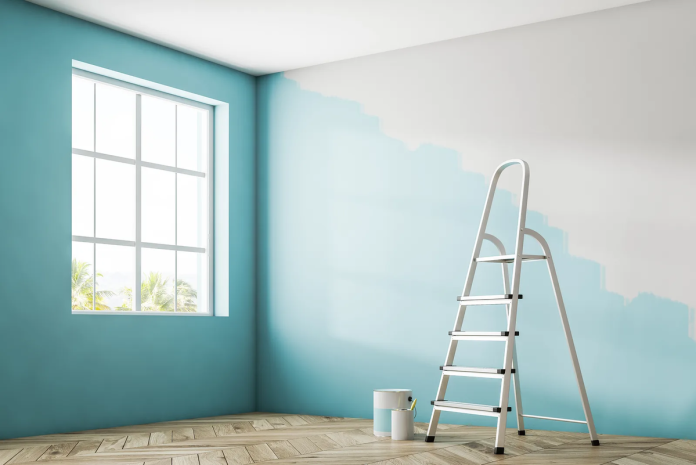When was the last time you saw your home’s walls refreshed? Do you feel the need to paint your house? A lot of people have different views regarding interior painting. What people don’t know is that interior painting is not simply decorating; it enhances areas and creates the atmosphere for home and work environments. Regardless of whether one is watering a part of the house or making preparations to sell a house, painting is the most crucial aspect of changing or improving the physical environment.
Why Interior Painting Matters
Enhancing Aesthetics
Emotions can also be a product of color. Proper painting of the interiors yields great results, and that makes you feel good since you feel that the interior is a reflection of you. Fancy lying in a soft pastel colored bedroom or, on the other note, getting a boost in an interior that is painted in bright and powerful hues.
Increasing Property Value
Planning to sell your home? Tastefully done painting of interiors adds value to homes and is relatively inexpensive in the equation of market perception. Secular colours which are inoffensive and non-controversial also are preferred by a large number of clients.
Preparing for Interior Painting
Understanding Color Psychology
Colors influence our mood. It tries to look modest like bluesk cheerful like yellows and try to look natural like greens. That helps you understand which color shade is suitable for which room of the house when choosing the perfect color palette.
Matching Colors to Room Purpose
They do not necessarily mean that a warm bedroom requires pastel colors or that a warm workplace needs bright colors.
Gathering Essential Tools
From the brush to the roller and painter’s tape, the right tools make the work so much easier.
Preparing Walls and Surfaces
There’s no question: Prep done right! Every surface should be sanded, walls should be washed and primed for more balanced paint uptake.
Step-by-Step Interior Painting Process
Priming the Walls
This process makes the paint job adhere well to the surface and also levels out irregularities that exist in the surface being painted.
Applying Base Coats
Start with a thin, even coat. The secret is to practice a good amount of patience and wait for one layer to dry before applying the other.
Adding Finishing Touches
Details matter! There is also more need for a small brush, mainly at corners and edges, to give the surface a definite touch.
Pro Tips for a Professional Finish
Using Painter’s Tape Effectively
This gives the region at the edges of the tape a border that doesn’t have bleeding and gives the tape clean lines.
Achieving Smooth Brush Strokes
Avoid overloading your brush. Ensure those strokes are uniform to avoid building streaks on the wall.
Common Mistakes to Avoid
Skipping Wall Preparation
Raw walls make it possible to develop an inferior surface of the walls or peeling of paints.
Overloading Paint Brushes
Less is more! They drip when full, and they do not spread evenly on the surface.
Choosing Between DIY and Professional Services
Benefits of DIY
Such projects are relatively cheaper compared to hiring someone professionally due to being able to express one’s personality into the work done.
When to Hire Professionals
Complex designs or projects that are to be done on a large scale are better handled by professionals to avoid ruining a design.
Cost Estimation for Interior Painting
Factors Influencing Costs
The room size, kind of paint used, and amount of work done also have a bearing.
Budget-Friendly Tips
It’s better to buy quality paints that are on a discount and do as much of the preparation work yourself to save money.
Eco-Friendly Interior Painting Options
Low-VOC and Non-Toxic Paints
Low-VOC and non-toxic paints eliminate indoor air pollution or are least hazardous to the lives of your family members.
Sustainable Painting Practices
Properly get rid of any remaining paint, and even think about trying to recycle used paint cans.
Nothing says redesign as much as painting the interiors; it is a task that transforms a home into a new space. When appropriately applied, those techniques and tools can help you produce outstanding results and make your home look as if it just came out of the assembly line.



